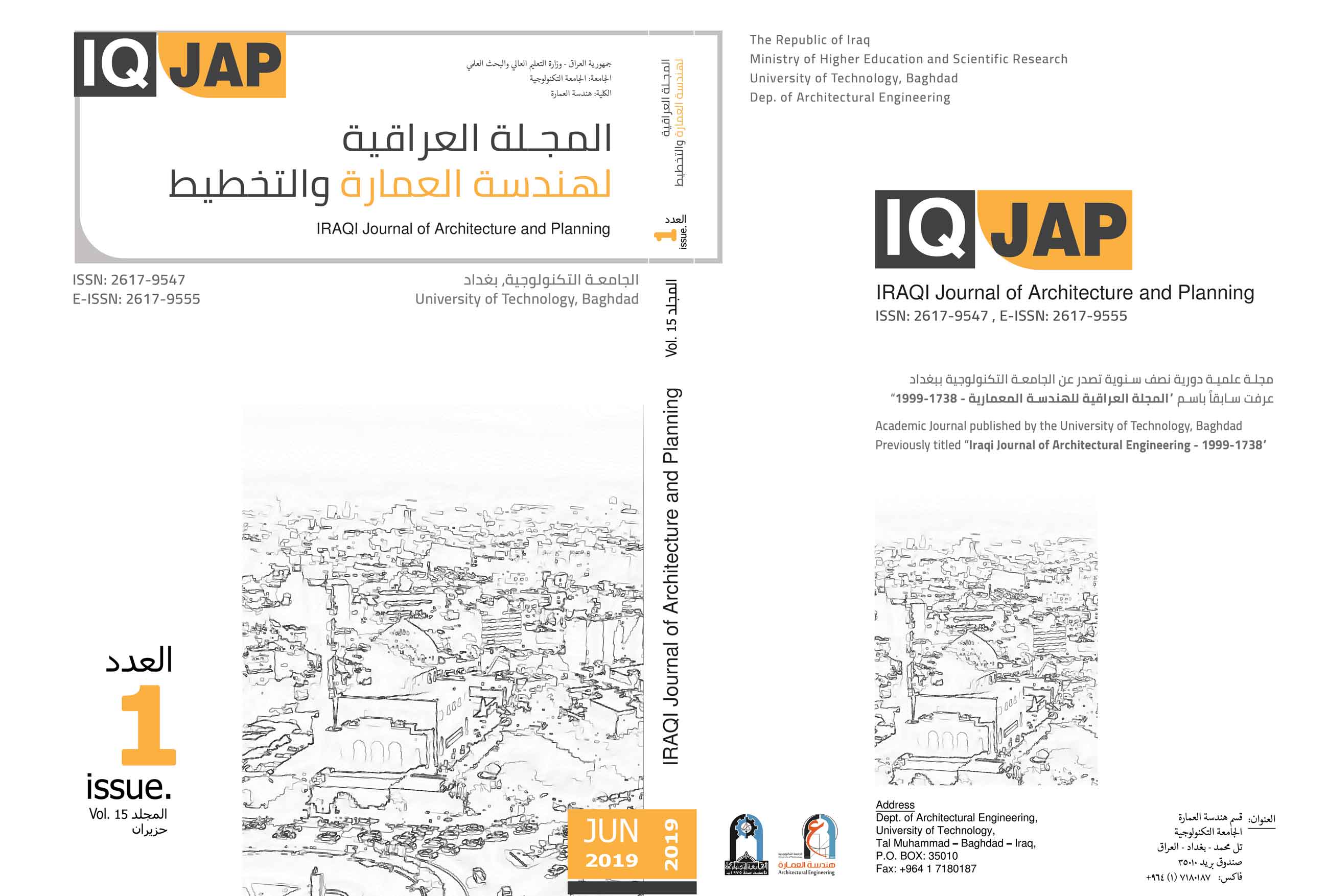Virtues of al-Farabi in the transformation of the city
Baghdad city markets model
Abstract
The individual is the basis of the emergence of cities, through which the emergence of multiple cities differed in terms of location, history and population, but did not remain in the structure of the initial list until our present time without the transformation and change in the structure of the city and by its various functions such as housing and shopping and other services, whether the social aspect or Economic, political or religious, and therefore we find that the emergence of any architectural model in the city is linked to the individual and society through them are identified the nucleus of the first models and then changes to architectural models influenced by the changing social needs as a result of the spatial and temporal action of the era, Research problem "The role of the changing social needs that led to the transformation of the market model of the historic city of Baghdad." The aim of the research was to "demonstrate the impact of the social needs of the individual on the transformation of the pattern of basic formations in architectural models (markets) in the historic city of Baghdad." The research was based on an inductive analytical approach to a common reading between the virtues of al-Farabi and Maslow's hierarchy of needs. It was based on the stages of the emergence of models of the traditional markets of Baghdad as a case study through which the vocabulary of the theoretical framework is applied in order to study the extent of the individual's interaction with the changing social variables spatially and temporally, and the reflection on the individual's profession in the city and its practice through the professional ethics of the work that is embodied in the city market.
Downloads
References
Al-Ali, Saleh Ahmed, 1988 "Landmarks of Baghdad Administrative and Urban" A schematic study, House of Public Cultural Affairs, Baghdad, Iraq.
Al- Jayousi, Mustafa, 2005, Encyclopaedia of Arab and Muslim Scholars and their Media, Dar Osama for Publishing & Distribution, Oman, Jourdan.
Al-Farabi, Abu Nasr, 1987, "A Look at the Way of Happiness" , Amman, University of Jordan Publications, First Edition,.
Al-Farabi, Abu Nasr, 1998, "Civil Political Book", Beirut, Catholic Press,.
Al-Farabi, Abu Nasr, 1995, collection of happiness, Dar Al-Hilal Library, First edition.
Al-Jabri, Mohamed Hassan, 2002, "The Fortified City of Karkh: A Historical Study of its Old Stores", Ministry of Information, Baghdad, Iraq.
Al-Yacoubi, Ahmed Ibn Abi Yaqoub Ibn Wafih, 2002, "The Countries", First edition, Science Library, Beirut.
Al-Yousif, Dr. Ibrahim Jawad, 2017, "Introduction To Reading Architecture", First edition, Dar Al Walaa Printing & Publishing, Baghdad, Iraq.
Ibn Abdoun, 2009, " A Message in the Literature of Al - Hesba" .
Kamouna, dr. Haidar, 1991, "The Problem of Preserving Heritage Markets in the Modern Arab City", Baghdad, Iraq.
Lang, John, 1987 â€Creating Architecture Theory: The Role of the Behavioural Sciences in Environment Designâ€, New York; Van Nostrand Reinhold Company Inc.,
Maslow's Hierarchy of Needs, Saul McLeod, published 2007 , updated 2014, simplypsychology.org.
Mustafa Jawad, et others,1960, Baghdad, Iraqi Engineers Association, Baghdad, Iraq.
http://www.iiraqna.com.
http://www.iraqinhistory.com.
Copyright (c) 2019 Ibrahim Jawad Al-Yousif, Mustafa Kamil Kadhim Kadhim, Sura Kassim Ameen Ameen

This work is licensed under a Creative Commons Attribution-ShareAlike 4.0 International License.
You are free to use the work, but you have to attribute (refer to) the work in the manner specified by the author or licensor (but not in any way that suggests that they endorse you or your use of the work).
IRAQI J. ARCHIT & PLANN grants you the right to publish the metadata of the journal, it's issues and articles under the terms of the Creative Commons Attribution-ShareAlike 4.0 International License.
Author(s) hold the copyright of their aricles without restrictions. However, IRAQI J. ARCHIT & PLANN holds publishing rights for articles and their revisions once the article is published.
Authors can archive pre-prints (ie pre-refereeing) and post-prints (i.e. final draft post-refereeing) versions of the work they submitted to IRAQI J. ARCHIT & PLANN using non-for-profit open-access servers whether on author's personal website and/or institutional repositories including the university or research center where the author work.. For post-prints, only the IRAQI J. ARCHIT & PLANN’s as-published PDF version is permitted and the published source (IRAQI J. ARCHIT & PLANN’s website) must be clearly acknowledged within the archiving webpage.






